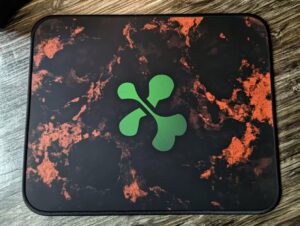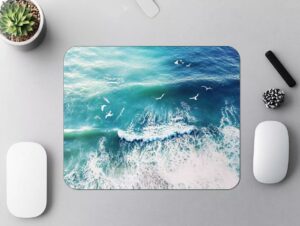Introduction
In today’s competitive market, the choice of mouse pad material can make—or break—user experience. From gaming champions demanding micro-precision to office professionals seeking comfort, each group requires different surface features, cushioning, and durability. In this guide, we explore the top mouse pad materials and explain why neoprene rubber and sponge-based options remain the industry favorite for designers and manufacturers.
1. Why Material Matters
- Precision Tracking: Surface texture directly affects sensor performance (optical or laser).
- Comfort & Ergonomics: Base cushioning reduces wrist fatigue during long sessions.
- Durability & Cost: Material wear, edge fraying, and price per unit impact both clients and suppliers.
2. Neoprene Rubber (Soft Cloth Mouse Pads)
Structure: Closed-cell neoprene base with polyester or microfiber fabric top.
Benefits:
- Shock Absorption: 2–6 mm thickness cushions hand movement.
- Low Static: Prevents dust build-up on sensors.
- Stable Base: Natural-rubber grip prevents slippage.
Applications: Premium gaming pads; ergonomic office mats; custom-print promotional pads.
3. Rubber Sponge (Budget & Bulk Solutions)
Structure: Open-cell rubber sponge fused with self-adhesive cloth.
Benefits:
- Cost-Effective: Lower material cost supports bulk orders.
- Lightweight: Easier and cheaper to ship.
- Customizable: Shrinkage managed in cut size allows tight tolerances.
Applications: Entry-level mats; bulk giveaways; samples for approval.
4. Hard-Top Surfaces (Plastic, Metal, Glass)
Materials: ABS plastic, anodized aluminum, tempered glass.
Pros/Cons:
| Material | Precision | Durability | Weight | Cost |
|---|---|---|---|---|
| Plastic | Good | Medium | Light | Low |
| Aluminum | Excellent | High | Medium-Heavy | Medium |
| Glass | Superior | Very High | Heavy | High |
Tip: Hard-top pads excel in speed and control but require consistent desk surfaces and may feel cold to the touch.
5. Specialty Fabrics & Hybrids
- Cordura®/Speed Cloth: Water-resistant, wear-resistant for spill-prone environments.
- Leather/PU Top: Premium look, easy to clean, but can be costly.
- Hybrid Composites: Layered fabrics for combined speed and control.
6. How to Choose for Your Factory Line
- Define Your Market: Gaming, office, corporate gifting—each has different tolerance for cost vs. performance.
- Balance Thickness & Portability: 5 mm neoprene for gamers; 3 mm sponge for mail-away promos.
- Test Sensor Compatibility: Always run sample pads through optical and laser mice to ensure no tracking errors.
- Plan for Edge Finishing: Overlocked or heat-seal to prevent fraying—adds cost but increases lifespan.
7. Why Shuiyeung Rubber?
- Custom Rubber Formulations: From ultra-soft neoprene to stable sponge, we tailor mixes for any application.
- Precise Cutting & Finishing: CNC die-cut or laser-cut to exact dimensions, with expert edge treatments.
- Quality Assurance: ISO-certified processes, material certificates (OEKO-Tex, FSC) on request.
- Scalable Production: MOQ as low as 100 sets, up to container-scale bulk, all made in our Dongguan facility.
Conclusion
Selecting the right mouse pad material is a strategic decision—impacting user satisfaction, production costs, and brand reputation. Whether you need high-performance neoprene for gaming leagues or cost-effective sponge for mass promotions, Shuiyeung Rubber delivers tailored solutions that rank your products at the top of customer wish-lists… and search results.





